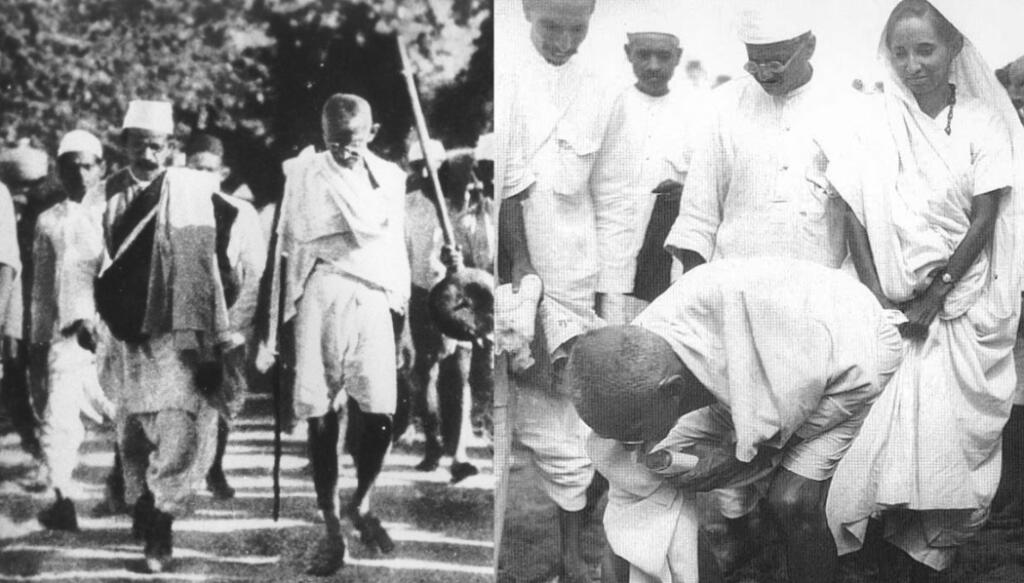The Indian calendar is dotted with important dates- January 26 and August 15 being at the top. But there is another important date- March 12, as the day marks the beginning of the Civil Disobedience Movement with the Dandi March.
The Dandi March involved a distance of 386 km from Sabarmati Ashram to Dandi on foot. Led by Mahatma Gandhi, thousands of volunteers marched to the coastal town of Dandi and broke the infamous salt law on April 5. This act of civil disobedience later took the form of a nationwide movement against British rule.
But what exactly is the context of Dandi March. Did it take place in isolation or were there any connected events leading up to the Salt Satyagrah?
The Non-Cooperation Movement
In 1920, Non-Cooperation Movement was launched by Gandhi. The collective conscience of the nation was already shaken by the Rowlatt Act and the Jallianwala Bagh massacre. So, the Non-Cooperation Movement became incredibly popular amongst the masses.
Days later, on February 12, Gandhi officially withdrew from the Movement as he felt that people were not ready to take up a non-violent movement.
Gandhi himself was arrested by the British on March 10, 1922, and later sentenced to six years’ imprisonment. But he was released in February 1924, following appendicitis surgery.
By the time he was released, the political landscape had changed. Congress was divided into two factions- one led by Chitta Ranjan Das and Motilal Nehru that favoured the party’s entry into legislatures, and the other led by Chakravarti Rajagopalachari and Sardar Vallabhbhai Patel. In the mid-1920s, Gandhi took little interest in politics and there wasn’t much happening on the national level either.
So, how did things get charged up into Dandi March and Civil Disobedience Movement?
1927 Simon Commission and the rise of revolutionary activity
The national political atmosphere suddenly got charged up in 1927 with the appointment of the Simon Commission. Nationwide protests started against the exclusionary character of the Commission that was supposed to study Constitutional changes in India but it didn’t have a single Indian representative.
The death of India’s respected freedom fighter Lala Lajpat Rai during a lathi-charge by British police officials further enraged Indian youth.
Thereafter, Bhagat Singh, Rajguru, Sukhdev and many other Hindustan Socialist Republican Association (HSRA) leaders pushed for independence from British rule. Their brave actions like throwing bombs in the Central Assembly Hall and shouting “Inquilab Zindabad!”, and holding a long hunger strike in jail mobilised sentiment against the British rule. The nation wanted freedom from British rule and would have settled for nothing less.
Read more: Even after 15 Years of its release, The Legend of Bhagat Singh remains a milestone of Indian Cinema
The Chattogram uprising
At the same time, the Chattogram (or Chittagong) of present-day Bangladesh also witnessed an uprising. In 1930, Surya Sen who was fondly known as Masterda led the Chattogram uprising against the British. With 63 young, passionate revolutionaries, Masterda raided Chittagong British Armoury on April 18, 1930.
The nationalist sentiment was on the boil and therefore such revolutionary activities coincided with the Dandi March.
Rise of Netaji Subhash Chandra Bose and Bengal Volunteer Corps
The mid-1920s and late-1920s also witnessed the rise of an audacious, flamboyant hero of the Indian freedom struggle- Netaji Subhash Chandra Bose.
Bose founded the Bengal Volunteer Corps and was also its Chief Officer or G.O.C, prior to the Calcutta session of the Congress in 1928.
Bose wanted to take the fight to the British and overthrow the British Raj as quickly as possible.
In his own words, “The Bengal Volunteer Corps came into existence at the time of the Calcutta Congress (1928). For the Congress and the national exhibition connected with it, a large body of volunteers had been necessary and the writer had been entrusted by the Congress authorities with the organisation and training of the Corps. Though the Corps was a peaceful and unarmed body, military discipline and training in the military drill was imparted to the volunteers and they were also given a semi-military uniform. “
The hidden intention of the Bengal Volunteer Corps was to prepare for a military campaign against the British Raj and to stay ready for violent activity against the Raj. This was largely a reaction to oppressive policies that the British had unveiled with the Simon Commission and the brutal murder of Lala Lajpat Rai by British officials.
No historical event takes place in isolation. The Dandi March too is a historical event and surrounding it are several events that ultimately led to the Salt Satyagrah.
